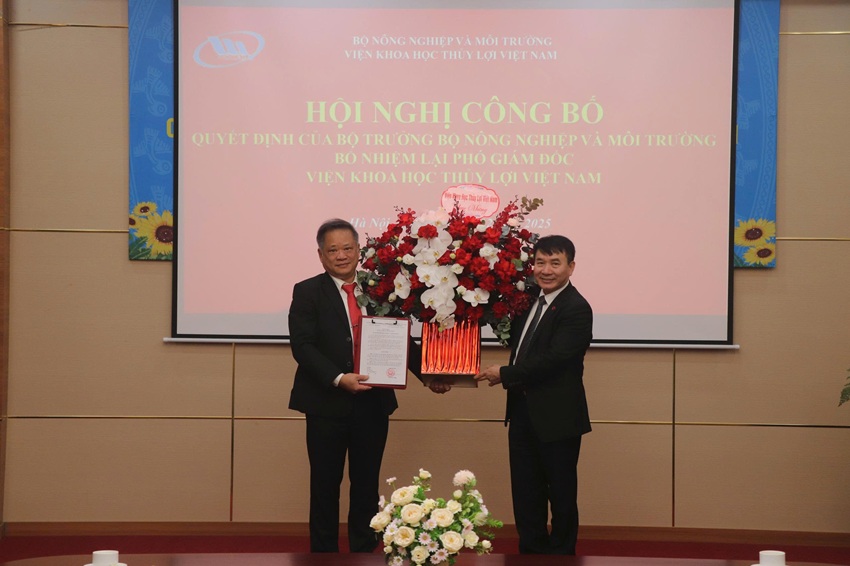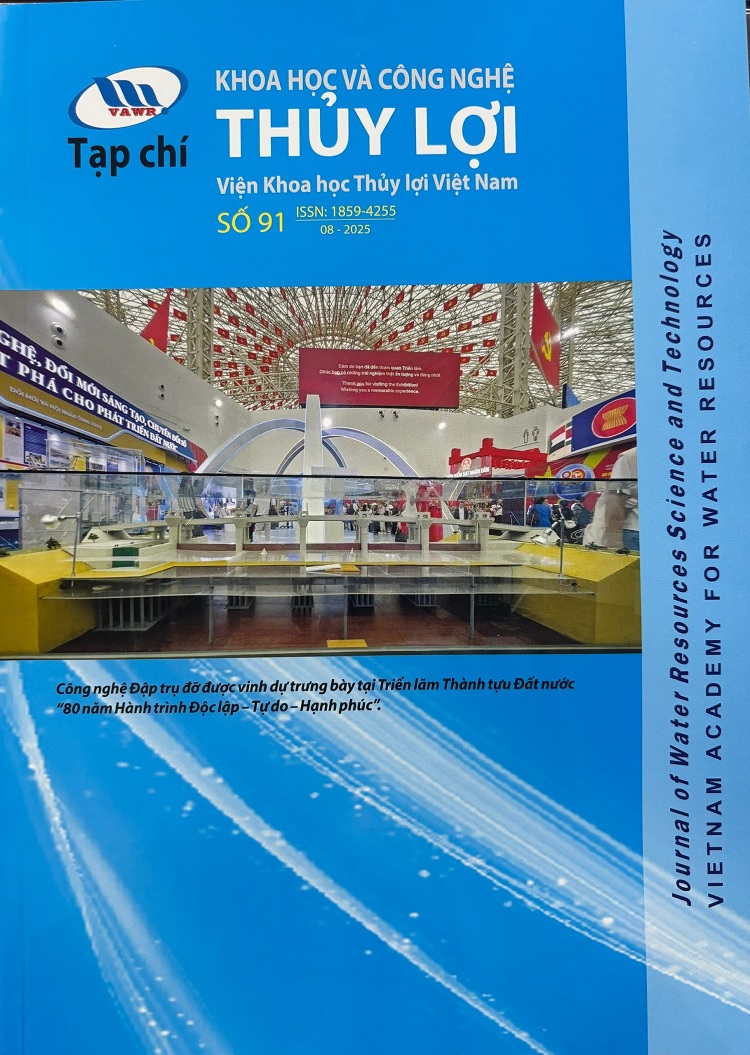A Study on Temperature Stress Control Measures of MgO Concrete Dam
05/08/2021In recent years, the method of preventing cracks in dam body by adding Magnesium Oxide (MgO) to concrete has attracted more and more attention. This method makes full use of the delayed micro expansion characteristics of MgO to reduce or compensate the shrinkage deformation of concrete, reduce the tensile stress of concrete dam, and then effectively reduce the possibility of dam cracking. This paper studied the theoretical basis of using MgO to compensate for heat shrinkage, control thermal stress, and limit concrete cracking. After that, an exper-imental study on the deformation characteristics of MgO con-crete was carried out, and the mathematical model of autoge-nous volume deformation of MgO concrete is introduced. Finally, with the Linxihe project as the background, a Three-dimensional Finite element method (FEM) numerical simulation model was established to consider the thermal stress compensa-tion efficiency of MgO concrete by different content. The calcu-lation results show that using the expansibility of MgO concrete to create effective compressive stress in mass concrete can con-trol thermal stress and improve the crack resistance. The re-search results have promoted the search for solutions to control temperature and prevent cracking of concrete dams, provided support for more accurate effective concrete dam construction measures.
I. INTRODUCTION
II. CONCRETE THERMAL CRACKING AND PREVENTION
A. Cracking phenomenon of concrete
B. Measures of cracking prevention
C. Application of MgO concrete in arch dams
III. EXPERIMENTAL STUDY ON THE AUTOGENOUS VOLUME DEFORMATION OF MGO CONCRETE
A. Expansion mechanism and characteristics of MgO concrete
B. Experimental results of the AVD process of MgO con-crete
C. The mathematical model to simulate the AVD process
IV. EVALUATE THE THERMAL STRESS CONTROL EFFICIENCY OF MGO CONCRETE DAM
A. Finite element mesh
B. Analysis of the effect of MgO content on thermal stress field
V. CONCLUSION
ACKNOWLEDGMENTS
REFERENCES
[1] S. H. Zhen, Hydraulic Structures [M]. Springer, Berlin, Heidelberg, 2015.
[2] V. C. Nguyen, F. G. Tong, and V. N. Nguyen, “Modeling of autogenous volume deformation process of RCC mixed with MgO based on concrete expansion experiment [J],” Constr. Build. Mater., vol. 210, pp. 650–659, 2019.
[3] V. C. Nguyen, X. S. Zhang, V. N. Nguyen, D. T. Phan, and G. Liu, “Experimental study on autogenous volume deformation of RCC mixed with MgO [C],” IOP Conf. Ser. Sci. Eng., vol. 794, pp. 1–7, 2020.
[4] B. F. Zhu, “On the feasibility of building high quality arch dams without cracking and the relevant techniques [J],” J. Hydraul. Eng., vol. 30, no. 10, pp. 1155–1162, 2006.
[5] S. Q. Gong and Z. H. Liu, “Prevention measures of temperature shrinkage crack in mass concrete of highway construction [C],” in 2010 International Conference on Mechanic Automation and Control Engineering, MACE2010, 2010.
[6] S. H. Liu and K. H. Fang, “Mathematical model of autogenous volume deformation of MgO concrete [J],” J. Hydroelectr. Eng., no. 1, pp. 81–84, 2006.
[7] Narwaria & Tiwari, “Development of cracks in concrete, preventive measures and treatment methods: A review [J],” Int. Res. J. Eng. Technol., pp. 671–677, 2016.
[8] H. N. Do, “Measures to control heat during roller compacted concrete construction [K],” Yen Bai Department of Construction, 2014. [Online]. Available: http://soxaydung.yenbai.gov.vn.
[9] C. J. Du, “A Review of Magnesium Oxide in Concrete [J],” Concr. Int., vol. 27, pp. 45–50, 2005.
[10] C. L. Chen, C. S. Tang, and Z. H. Zhao, “Application of MgO Concrete in China Dongfeng Arch Dam Foundation [J],” Adv. Mater. Res., vol. 168–170, pp. 1953–1956, 2011.
[11] P. W. Gao, X. . L. Lu, and M. S. Tang, “Shrinkage and expansive strain of concrete with fly ash and expansive agent [J],” J. Wuhan Univ. Technol. Mater. Sci. Ed., vol. 24, no. 1, pp. 150–153, 2009.
[12] L. Guo and H. Y. Cai, “Experimental Study on RCC Character of Additive MgO and Simulation of Crack Prevention in High Temperature Construction [J],” Adv. Mater. Res., vol. 368–373, pp. 651–654, 2011.
[13] E. Schrader and R. Mekinnon, “RCC Paving and Slabs - Deeper is Cheaper [J],” Concr. Int., vol. 11, no. 5, pp. 64–66, 1989.
[14] C. Xiehua, “Study on the Delay MgO Cement [J],” J. Nanjing Univ. Chem. Technol., vol. 2, pp. 30–37, 1987.
[15] L. Guo and H. Y. Cai, “Experimental Study on RCC Character of Additive MgO and Simulation of Crack Prevention in High Temperature Construction [J],” Adv. Mater. Res., vol. 368–373, pp. 651–654, 2011.
[16] L. Zheng, X. H. Cui, and M. S. Tang, “MgO-type delayed expansive cement [J],” Cem. Concr. Res., vol. 21, no. 6, pp. 1049–1057, 1991.
[17] L. Zheng, X. H. Cui, and M. S. Tang, “Hydration and setting time of MgO-type expansive cement [J],” Cem. Concr. Res., vol. 22, pp. 1–5, 1992.
[18] X. Y. Jing, X. H. Liu, and X. Zhang, “Thermal Stress Compensation of MgO Concrete in Construction of High Arch Dams in Cold Areas [J],” Adv. Mater. Res., vol. 852, pp. 427–431, 2014.
[19] J. Wang, D. K. Zhou, and Y. Q. Wang, “Technology of construction of RCC arch dam of Dahuashui hydropower station [J],” Guizhou water power, vol. 21, no. 2, pp. 40–43, 2007.
[20] Lea. F. M, “The chenistry of cement and concrete [N],” Chemical Publishing Company, 1971.
[21] Y. Zhu, Z. Xu, and L. Zhang, “Comment on dam construction technology with MgO concrete [G],” Hongshui River, vol. 21, no. 3. pp. 45–49, 2002.
[22] S. H. Liu and K. K. Fang, “Study on autogenous deformation of concrete incorporating MgO as expansive agent [J],” Environ. Ecol. Technol. Concr., vol. 302–303, pp. 155–161, 2006.
[23] P. W. Gao, S. Y. Xu, X. Chen, J. Li, and X. L. Lu, “Research on autogenous volume deformation of concrete with MgO [J],” Constr. Build. Mater., vol. 40, pp. 998–1001, 2013.
[24] X. P. Luo, “Simulation Analysis of Magnesia Concrete Arch Dam Without Contraction Joints [D],” Tsinghua University, 2002.
[25] B. F. Zhu, “On Construction of Dams by Concrete With Gentle Volume Expansion [J],” J. Hydroelectr. Eng., no. 3, pp. 1–13, 2000.
[26] Z. S. Cao, “Crack prevention technique in rapid dam construction with MgO weakly expending concrete [J],” Water Power, no. 6, pp. 52–53, 1994.
[27] Z. W. Liu, “Application of new technology of rapid construction of arch dam with MgO micro expansion concrete in Changsha Arch Dam of Guangdong Province [J],” Guangdong Water Resour. Hydropower, no. 6, pp. 8–14, 2000.
[28] H. H. Vu, D. T. Duong, and Q. V. Vu, “New technology in building the concrete arch dam [J],” vol. 2, no. 1, pp. 1–10, 2008.
[29] W. Z. Yang, Q. X. Zhao, and G. X. Zhang, “Application and study on MgO concrete in dam construction,” Water Resour. Plan. Des., pp. 1–13, 2008.
[30] M. X. Yuan and M. S. Tang, “Research on the autogenous volume expansion mechanism of Jilin Baishan concrete dam [J],” J. Nanjing Univ. Technol. Sci. Ed., no. 2, pp. 38–45, 1984.
[31] X. L. Lu, F. Geng, H. B. Zhang, and X. Chen, “Influence of MgO-type expansive agent hydration behaviors on expansive properties of concrete [J],” J. Wuhan Univ. Technol. Mater. Sci. Ed., vol. 26, no. 2, pp. 344–346, 2011.
[32] V. C. Nguyen, “Numerical simulation on temperature and thermal stress of MgO concrete arch dam [D],” China Three Gorges University, 2020.
Van Chinh Nguyen | Fu Guo Tong |
Van Nghia Nguyen | Dinh Tuan Phan |
Gang Liu | Chang Liu |
Detail: A Study on Temperature Stress Control Measures of MgO Concrete Dam
International Journal of Engineering Research & Technology (IJERT)
ISSN: 2278-0181
Vol. 9 Issue 06, June-2020
Ý kiến góp ý:









